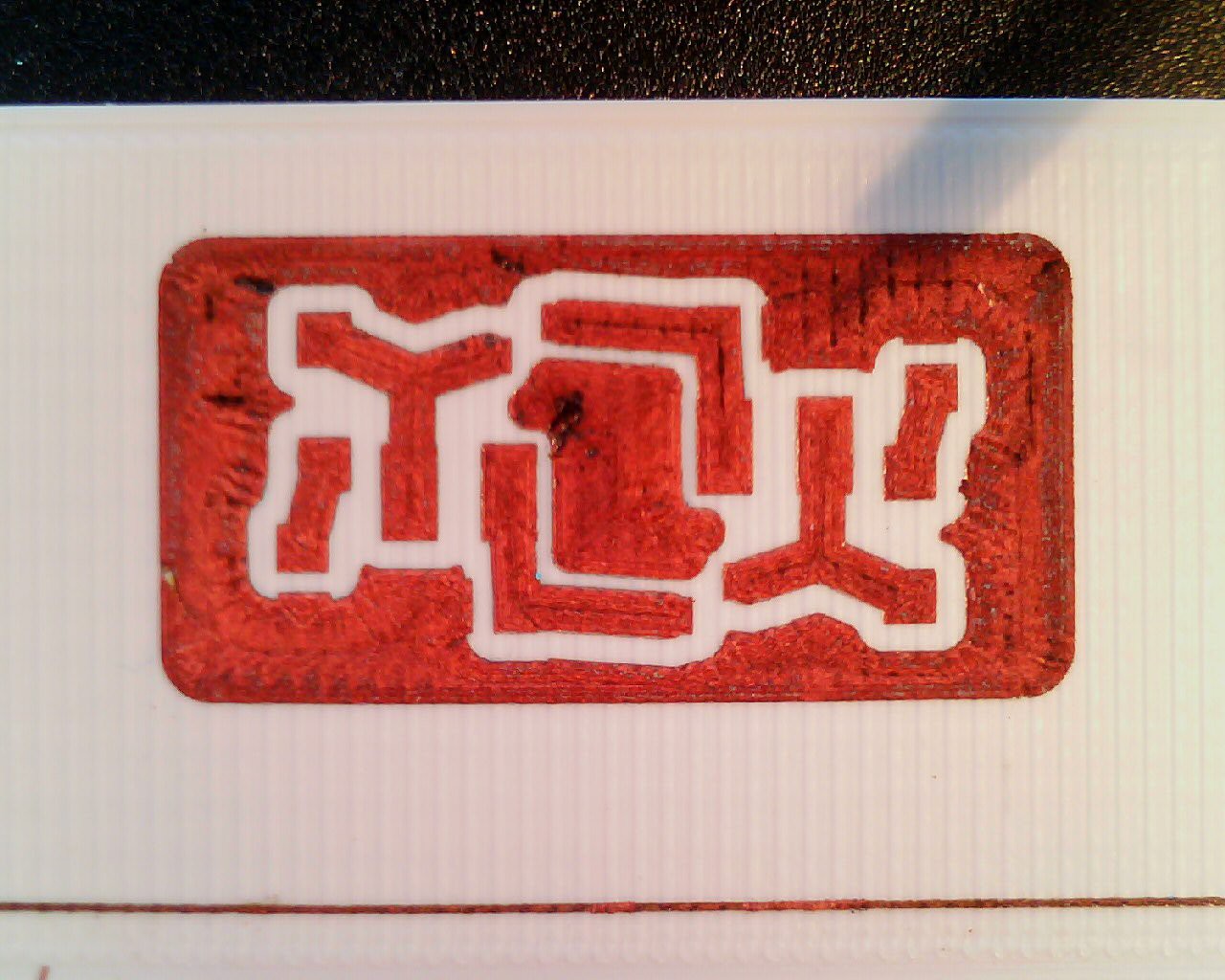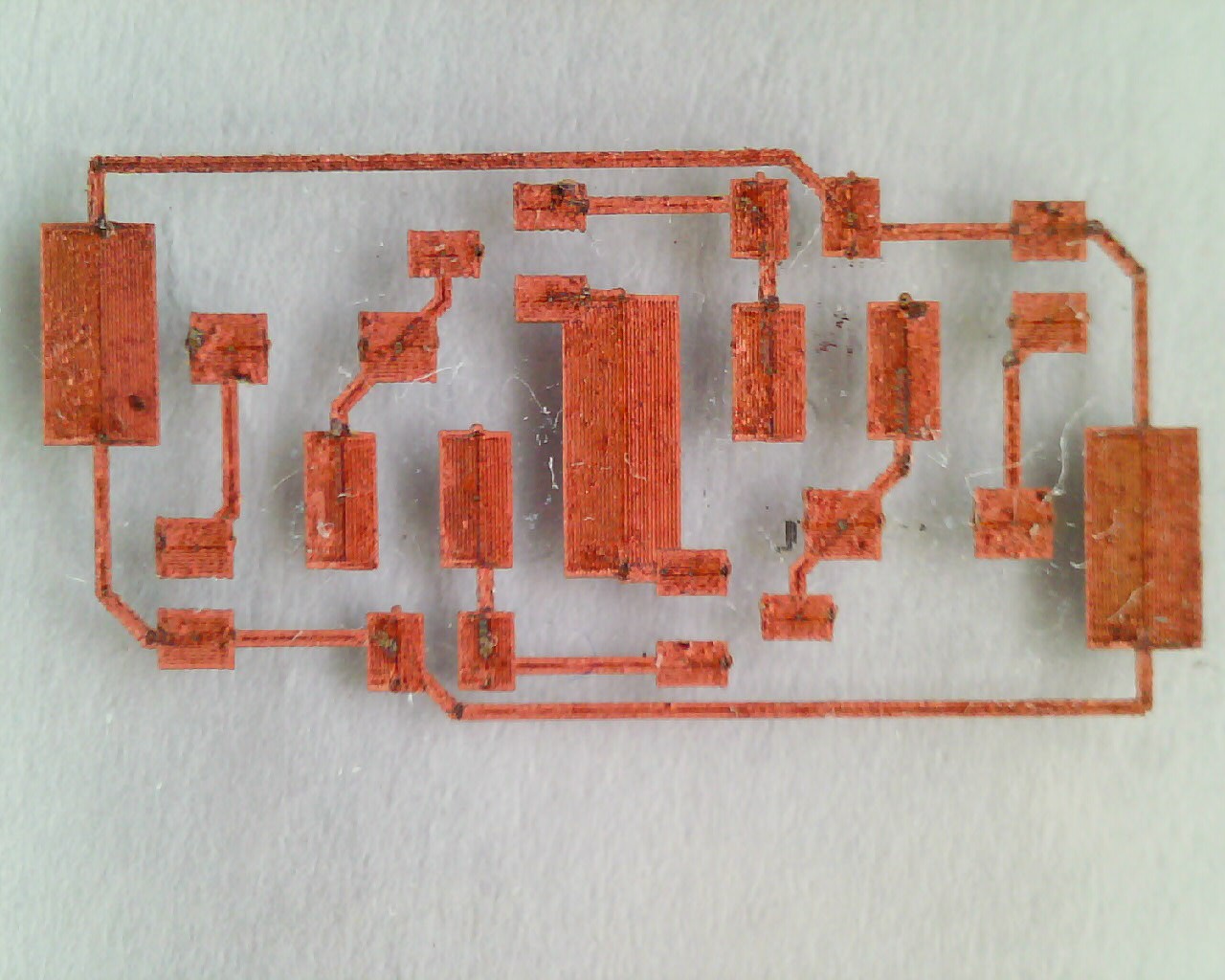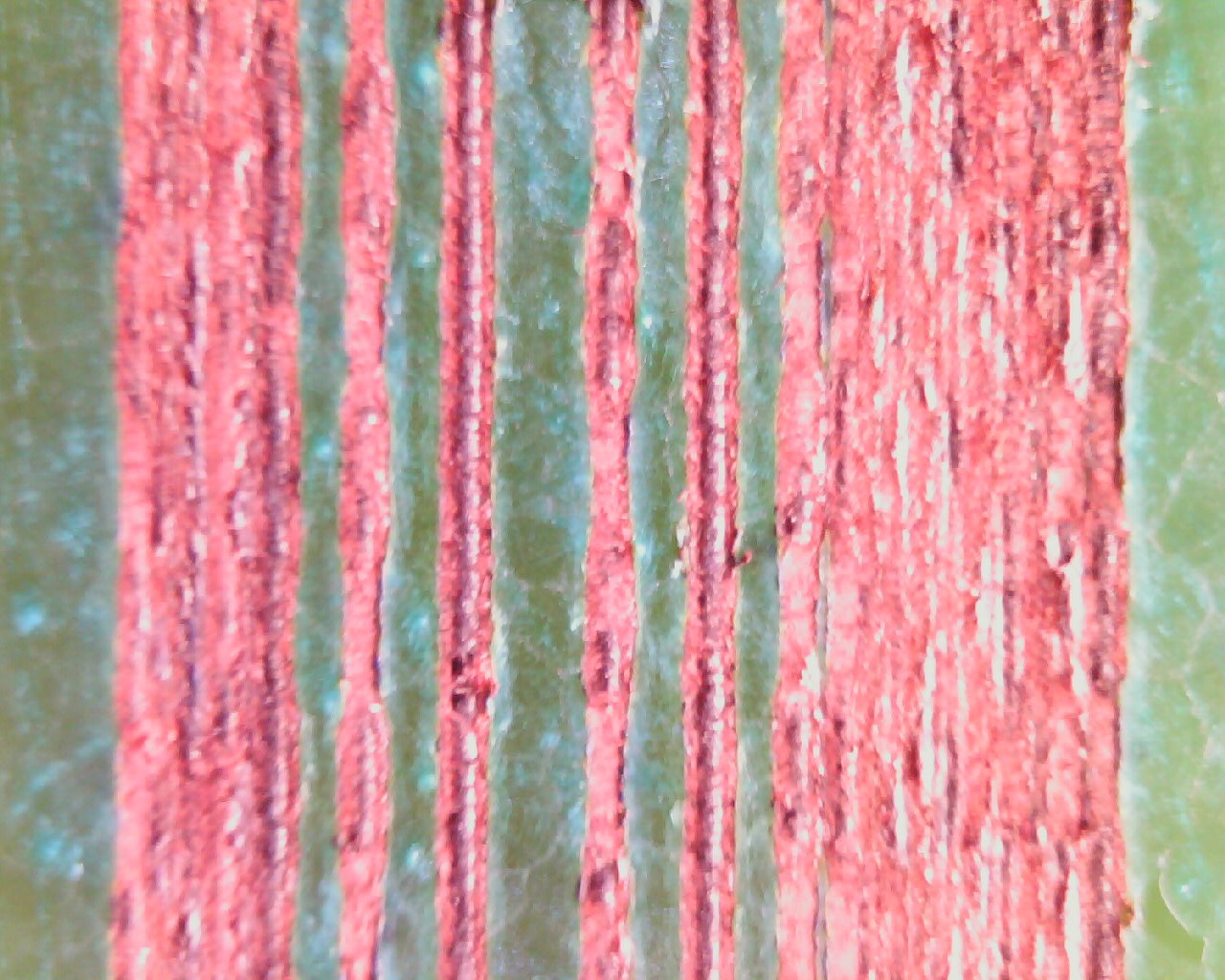substrate: white PET-G
precursor: saturated Copper(II) formate solution, with about 5% (by weight) glycerol
process: window cleaner as wetting agent, 3 layers with 50% power increase per layer
The resistance measured from bottom-left corner to top-right is below 1 Ohm. The dimension of the sample are about 2.5cm x 1.25cm (1"x0.5").

substrate: glass (microscope slide)
precursor: saturated Copper(II) formate solution
process: dishwasher detergent as wetting agent, 2 layers
Glass seems to be the easiest of all substrates, it is impossible to irradiate with too much power.
Tin bismuth solder (melts at 138°C) seems to work (limited experience). The footprints are SOT-23 and 0805 mostly, traces are about 10mil.

substrate: polyimide (Kapton) on glass (microscope slide)
precursor: saturated Copper(II) formate solution
process: dishwasher detergent as wetting agent, single layer
The distance between the traces in the center is about 0.5mm (20mil), based on that the trace width is estimated as 0.15mm (6mil). Lead Tin flux dissolves the copper.

substrate: fiber reinforced epoxy (FR4)
precursor: saturated Copper(II) formate solution
process: dishwasher detergent as wetting agent, single layer
Tin Lead solder doesn't work.

 rolmie
rolmie
Discussions
Become a Hackaday.io Member
Create an account to leave a comment. Already have an account? Log In.